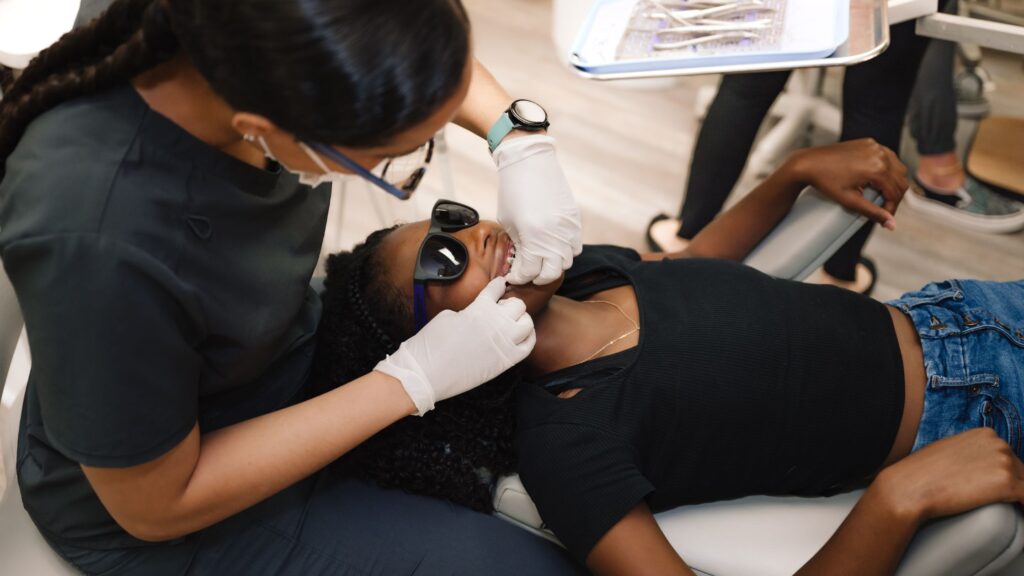There are many different tools that orthodontists use today to help straighten out their patients’ teeth. Metal braces are the most obvious tooth realignment tool that comes to most people’s minds.
But what about “dental expanders?” You sometimes hear the term expanders, but many people aren’t quite sure what they are, what they do, or how they relate to braces.
Here are the basics on the different roles of traditional braces and of expanders in correcting tooth and jaw misalignment problems.
What You Need To Know About Dental Expanders
Expanders are not a different kind of braces. They are used, however, to prepare the mouth to receive metal braces in some cases.
Expanders are sometimes referred to as phase one of the tooth realignment process. They are used with children only and generally only with patients who still have at least some of their “baby teeth.”
One of the main reasons for using expanders is to hasten the process of the loss of one’s baby teeth. The jaw is expanded enough to create extra space so that new teeth push their way in sooner and original teeth fall out faster.
When orthodontic treatment, via braces, is needed sooner rather than later for a child, expanders are a good alternative to having to extract multiple baby teeth. They allow your periodontist to get started treating tooth malocclusions sooner so that they are corrected while the child is younger. The sooner the better when it comes to tooth realignment!
A palate expander is used on children ranging from ages 6 to 10. It will exert gentle pressure over time to moderately expand the upper jaw (specifically the roof of the mouth, called the palate.) Expanders can correct irregularities in the shape of the jaw, too, and thus can address certain orthodontic problems on their own. But they are usually used as step one before braces – which are step two.
What You Need To Know About Dental Braces
There are many different types of braces available today, far more than were available in “the old days.” But traditional metal braces – albeit in a much-improved form, are still the stand-by that most patients choose.
Additionally, some patients now opt for more modern alternatives to metal braces such as clear braces and Invisalign® aligner trays. There are certain benefits to these alternative orthodontic treatment methods, like a more visible smile during treatment, the ability to retain the same lifestyle with Invisalign®, and easier oral cleaning with aligner trays.
However, braces may be needed for certain tougher cases of tooth misalignment. And braces may cost less too. For young children who don’t have all or most of their permanent teeth and might start out using expanders, braces would almost always be used next.
Braces can normally be put on by your orthodontist in a single appointment. Metal brackets will be attached to each tooth. A metal wire will then connect all the teeth, running through each bracket. The wire will be anchored somewhere in the back of the mouth and will need to be periodically tightened by a professional orthodontist.
Metal braces can only be resorted to after all of one’s baby teeth have fallen out. After all, it is one’s permanent teeth that one would be interested in straightening out. Plus, the jaw needs to develop properly first, and you can’t have teeth attached to brackets and wires suddenly falling out!
Expanders create extra spaces between teeth in the child’s mouth which braces then take advantage of. Teeth will be moved into these spaces over time by the gentle pressures exerted by the braces’ wires.
There is an ultra-thin membrane situated between the bottom of your tooth roots and the alveolar bone mass into which teeth are lodged. Braces work because they slowly but constantly exert pressure in a particular direction, “dragging” teeth over this membrane. The membrane makes the realignment of teeth un-painful, faster, and safer. It’s a good thing it’s there!
Does My Child Need Expanders Before Braces?
If you know that your child has some tooth misalignment problems and you want them to wear metal braces, you may be wondering whether or not they should wear an expander first.
First of all, your child needs to be between ages 6 and 10 and still have some of their baby teeth to qualify for expanders. Next, you need to be pretty sure you will want to use metal braces later on. Third, expanders can correct overbite, underbite, overcrowding, and certain alignment problems – to a degree.
Fourth, expanders can also help train young children to stop breathing so much through their mouths versus through their noses. And Fifth, expanders let you get a head start on tooth realignment by speeding up the natural process of baby teeth falling out.
Expanders can prepare the mouth for braces and help braces to work better and faster once they are put in. But they are not always necessary. You will have to talk to your orthodontist about it and judge based on a case-by-case basis.
To learn more about expanders, braces, and tooth realignment treatments in general, contact Beauchamp Orthodontics in Central Florida today to schedule a consultation!



